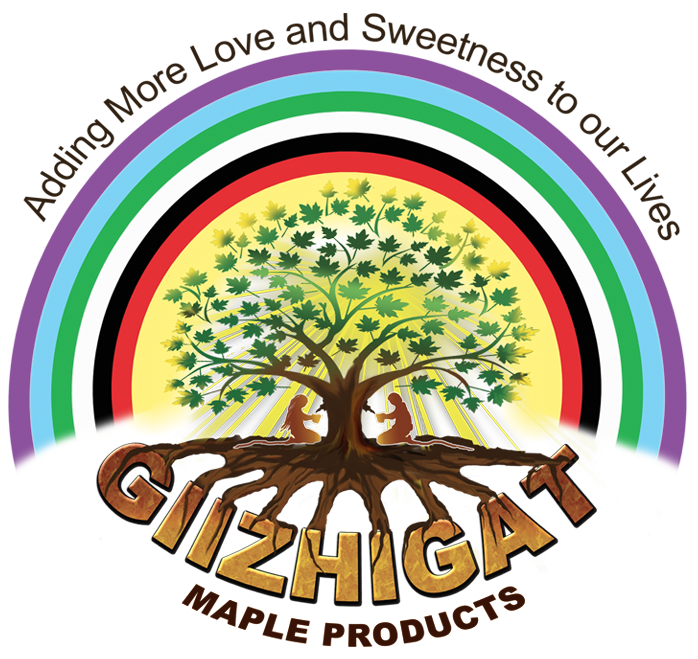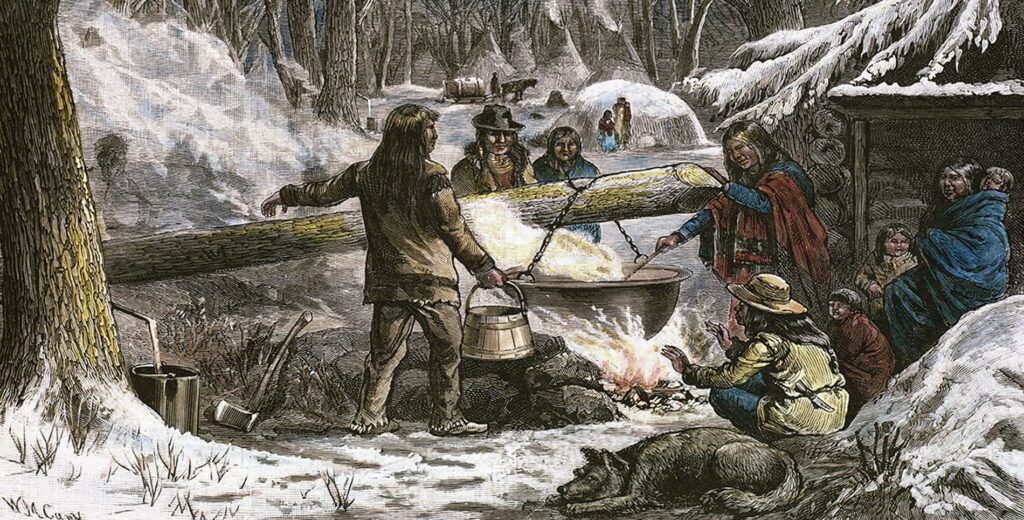By Bhavani Munshi
Decolonizing Maple Syrup
The fact that maple syrup is so rarely acknowledged as an Indigenous invention is a direct result of centuries of colonization and the concerted effort to erase Native culture and identity.
Maple syrup has long enjoyed an easy ubiquity on breakfast tables and shelves of souvenir shops all over North America. Gallon for gallon, it is more expensive than crude oil, and historically, it is centuries, if not millennia, older. But conversations around maple syrup rarely exceed the technical depth of grading and purity, the infamy of the supposed maple syrup mafia, or the racially charged branding of Aunt Jemima. Excluded entirely from these discussions is its true origin as an ingenious invention, simultaneously food and medicine, of the Anishinaabe, Haudenosaunee and Wabanaki peoples of northeastern North America, also known as Turtle Island.
The true origins of maple syrup are couched in legends—of a boy, exhausted from practicing his hunting skills, falling asleep with his tomahawk wedged in a sugar maple. Of maple syrup running freely from trees until Nanabozho, an Ojibwe trickster figure and culture hero, filled the trees with water, turning the syrup into a sap that required processing to prevent his people from becoming indolent. Of a woman—in some cases an Algonquin chief’s wife, and in others, a daughter or granddaughter—mistaking maple sap for water and boiling meat in it, creating a delicious surprise. Or of observing squirrels or woodpeckers drinking beads of sap from incisions in the trees’ bark.

